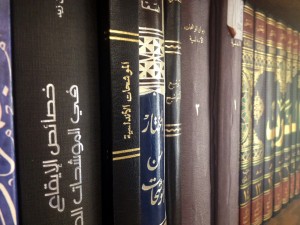
by Ahmad Almallah, PhD
The muwashshah as a branch of Arabic poetry is without a doubt a form exclusively associated with the time of Al-Andalus or Islamic Spain. However, there is no agreement among scholars on the origin of this kind of poetry. What is clear is that the only recorded muwashshahat date back to Andalusia alone and Andalusian poets. This is not to say that the muwashshah is entirely detached from the tradition of Arabic poetry before Al-Andalus. On the contrary, the connection between the classical Arabic poem, known as the qasida, and the muwashshah is essential. The new form depends visually and metrically on breaking the traditional structure of the qasida and its most essential unit al-bayt (the line). The line of the qasida is divided into two parts made of the same metrical pattern. At the end of each line in the qasida, the poet repeats the same rhyme for as long as the qasida will be. On the other hand, the muwashshah makes use of the Arabic meters as a way of guiding the poem musically, but without the limitations of rhyme and line in the qasida. The poet of the muwashshah can take the basic metrical pattern in the qasida and rearrange it in a way he/she sees fit. Also, the poet of the muwashshah can choose a rhyme pattern using many rhymes instead of the one rhyme of the classical Arabic poem.
The muwashshah takes Arabic poetry one step further. While the Arabic poem had to be composed on a certain set of meters, some of the poets who wrote muwashshahat started inventing their own meters. While scholars debate the exact catalyst for creating new metrical patterns, one can only assume that the poets composing in the familiar meters of Arabic poetry were in need of incorporating certain aspects of the new environment in their poetry. Thus the combination of the poet’s knowledge of Arabic poetry, and the exposure to new musical traditions and languages of Spain must have contributed significantly to the development of this art. This influence of the new context is clear in how it became customary to end the muwashshah with a line in Spanish, or in a dialect of spoken Arabic instead of the formal Arabic tongue.


